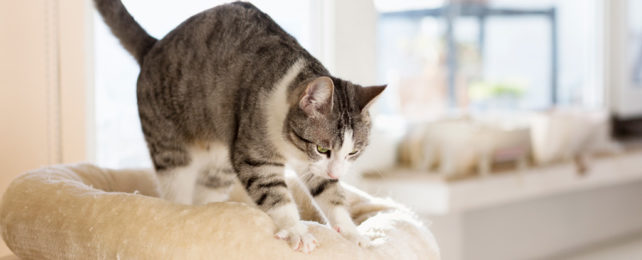
Kneading is when cats massage an object with the front paws, which extend and retract, one paw at a time.
This massaging action, named for its resemblance to kneading dough, is repeated rhythmically. You may have spotted your cat kneading and wondered how on Earth they developed such a behavior.
So, why do cats knead? Does it tell us anything about how they’re feeling, and is there anything you can do if they’re painfully kneading you while sitting on your lap?
The evolutionary background of kneading
Cats first begin to knead when just tiny kittens, still nursing from their mother. Kneading is associated with suckling, which helps stimulate a mother cat’s milk supply through the release of oxytocin and likely evolved for this reason.
Kneading also has another evolutionary advantage. It can be used as a form of tactile and pheromone communication between kitten and mother.
Cats have scent glands in their soft paw pads, and when they knead, these glands release pheromones (chemical messages used to communicate).
Kneading on their mother releases pheromones associated with bonding, identification, health status, and many other messages.
One of these, known as “cat-appeasing pheromone”, is released by the sebaceous glands round the mammary glands.
Pheromones are not only important for bonding between the mother and young. Cat-appeasing pheromone also has the potential to treat aggression in mature cats.

